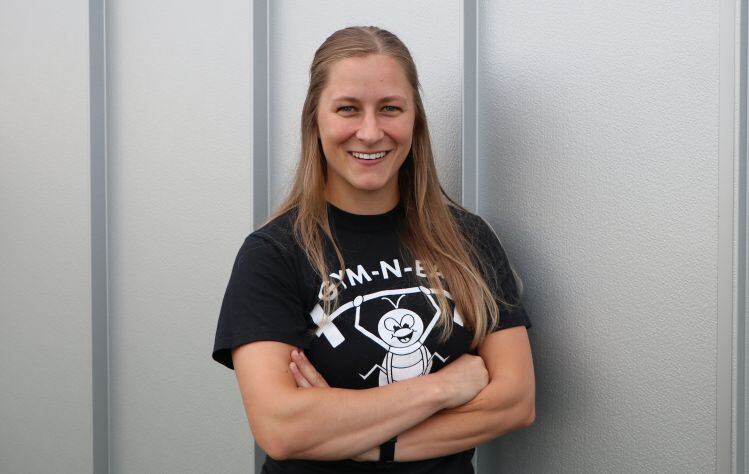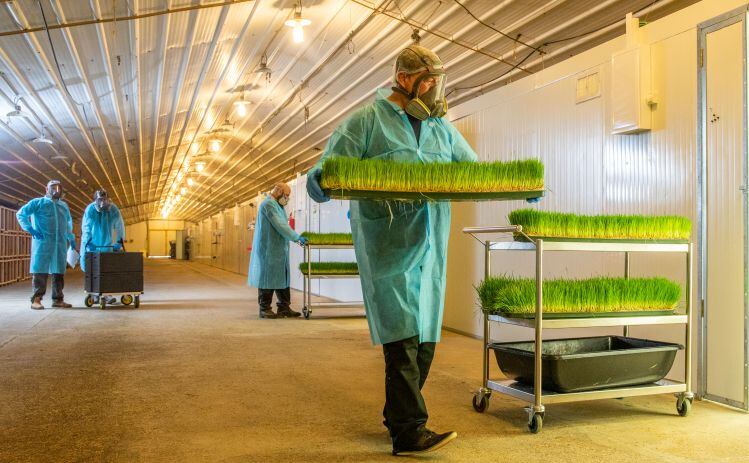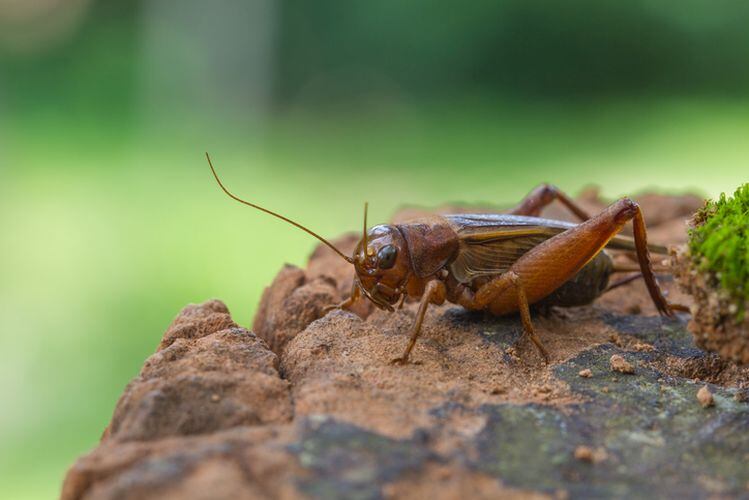Smith grew up on a corn and soybean farm in Iowa, left to play basketball at college in Philadelphia and later professionally in Ireland (where she earned a Master’s in finance) and started work as an equity derivatives trader before deciding to make an abrupt change of direction.
“I worked on the trading desk for about three and a half years before I figured out that I hated it,” says Smith. “So I quit and moved back home to the family farm, where my Dad encouraged me to look at some niche markets, and I started to do some research on entomophagy [eating insects].”
‘It was both fascinating and horrifying that all these people were building brands without being in control of the supply chain [for their core ingredient]’
Given her family background, her original plan was to focus on cricket farming, leaving others to create CPG brands featuring her edible bugs, adds Smith.
“But there were a lot of brands that came up and then died, and no small player in the US is going to compete with Thailand on price, so I decided to raise my own crickets.”
On a more strategic level, meanwhile, being in control of her own supply chain in such a nascent market also seemed important, she notes: “It was both fascinating and horrifying that all these people were building brands without being in control of the supply chain [for their core ingredient].
“So I opened my dedicated processing facility in the summer of 2019.”
In retrospect, she says, “I am super glad I went the route that I did. It has required me to grow more slowly, but I have a guaranteed market [her own CPG brand] on the other side. Today, I also have four contract growers that I have taught to raise crickets for me, and then I process them.”
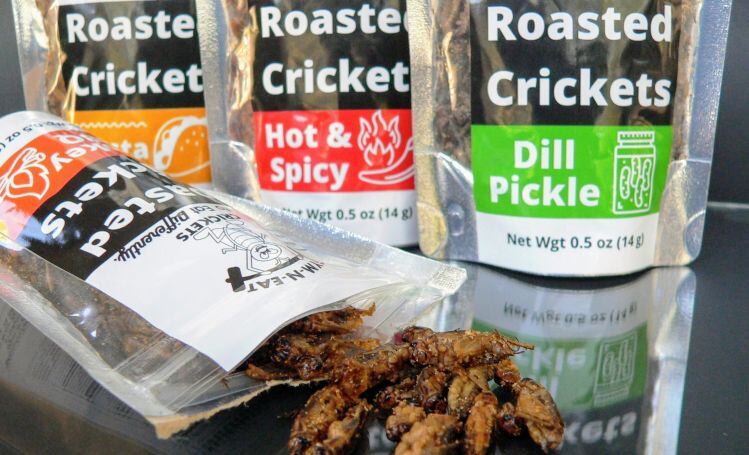
‘The whole crickets are responsible for 70% of my sales’
But does she have a guaranteed market for her finished products? And how is Gym-N-Eat Crickets performing?
She began selling her wares at farmer’s markets, before progressing onto bricks & mortar stores in 2020, and is now in around 100 locations including 50 Hy-Vee stores in the Midwest, which carry the top four flavors of her roasted whole crickets, running counter to the narrative that the best way to introduce Americans to edible insects is via formats that disguise the fact that you’re eating, well, insects.
“The whole crickets [which come in flavors such as Smokey BBQ and Buffalo Ranch] are responsible for 70% of my sales," says Smith.
"If you were to tell me at the beginning [that whole crickets would be her top sellers], I’d have said, 'No Way,' although maybe part of the reason could be that 2020 and 2021 have been pretty horrendous for the nutrition bar category because of COVID-19, which is part of the reason Hy-Vee went for the whole crickets.
“So at Hy-Vee I’m near the jerky and nuts or the paleo section, but they also fit in stores' keto or low-carb sections.”
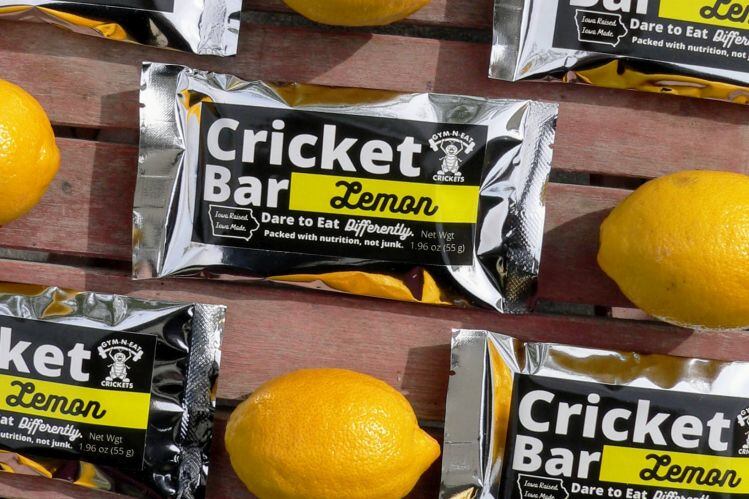
‘I’m happy if they're picking it up for the first time purely because of the novelty. What matters is that they come back…’
While some people can’t stomach the thought of eating crickets, she says, “Quite frankly, for people who have a massive aversion to eating insects, it doesn't matter if you're grinding them up or eating them whole, their mind is already made up. But that being said, I do offer cricket bars because for some people...[the format matters] and I do recognize that there are baby steps, so I have customers that start with the bars and then move onto the whole crickets or the powder.”
As to what prompts the initial purchase, she adds: “For sure there's a novelty piece to it, but I’m happy if they're picking it up for the first time purely because of the novelty. What matters is that they come back for more because they’re surprised that they like them."
‘I can tell you for a fact that here in the Midwest the momentum is building’
So is this a viable business with potential for growth, or really something for hobbyists?
Clearly, insect farming is no one’s idea of a get-rich-quick scheme, concedes Smith (“I live in my parents' basement, because, you know, entrepreneurship is very glamorous”), but it’s a lot more than a hobby, she insists.
“I can tell you for a fact that here in the Midwest the momentum is building. It is night and day, the difference between when I set out three years ago, versus today, although for people in venture capital, yes, it’s still probably too much of a slow burn, and you see some people shifting to animal feed.”
When it comes to marketing, which is all about understanding your target consumer, she says, “A lot of cricket protein products seem to be bars and powders targeted at 18-35 year old males that are into mountain biking. But in my experience here in the Midwest talking to thousands of people in a place that’s not known for progressive palates, it is three to one females to males who will try a cricket for the first time across the board, no matter the age, it can be little kids up to 70-year-olds.
“My ideal customer is a woman with kids under the age of 10. People want their kids to have protein and for whatever reason their kids love crickets.”

‘The first thing I say to anybody who approaches like my booth is hey, do you eat shrimp or lobster?’
So what kinds of things typically resonate with consumers that haven't tried crickets before?
“The very first thing I say to anybody who approaches like my booth is, 'Hey, do you eat shrimp or lobster?' I have a big sign on my booth that says ‘Eat prairie lobster' because I call crickets the prairie lobster – the same way some people call them land shrimp, because it starts the conversation.
“For the powder, I say to people, think of it like a high protein flax meal that you can put in everything, and it’s really going to raise the nutrition profile of your food.
“There are also people that don't tolerate dairy, so they can’t eat whey protein, and this is something to look at instead. I think the fact that I’m an athlete also helps, definitely, as my background lends credibility to speaking on health and protein.”
‘People have no concept of what half an ounce of crickets should cost’
When it comes to price, she points out, the great thing about selling whole roasted crickets is that US consumers don’t really have a frame of reference when it comes to how much to pay, whereas with bars, for example, they may have more of a sense of what represents value for money.
“People have no concept of what half an ounce of crickets should cost, which does allow us to build in a little extra margin, so in Hy-Vee a half ounce bag of crickets is between $4.50 and $5.”
Smith’s direct to consumer business – which she launched in December 2019 - is ticking along, she said. “But I’ve seen some interesting growth in the last two months in online marketplaces such as Faire and Abound, and Tundra and places like that.
“Live events are very important to me as well, because there’s an education factor with crickets, so when I can get in front of people, talk about what I do and hand out some samples, the conversion rate is very good. We had a booth at the Iowa State Fair this year where there’s a very diverse crowd, and the reception was awesome.”
Further reading:
- Edible insects in focus, part I: CPG 2nd wave focuses on benefits, not bugs... 'It’s like taking Jell-O and saying, ‘Hey! we've got a bunch of ground up cow bones and sugar. You want some?'
- Edible insects in focus part II: Scale and automation… Aspire Food Group gears up to open world’s largest edible cricket processing facility
- Edible insects in focus part III: Farming, from Mexico to Ontario to Israel… ‘At this point, if you're still in business, you definitely know what you're doing’
- Edible Insects in focus part IV: Grasshoppers, gummies, and patience…

